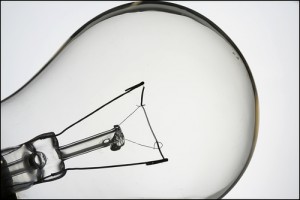3. To create an organization where schools and leaders can work together on problems with using technology to improve learning. This group is called the League of Innovative Schools, and at this very early stage, it's a loosely knit collaboration of people who've expressed interest in becoming involved.
Within this group, there are three specific goals.
- Making sure that schools and districts are informed and supportive of innovation when investing in new technologies -- it's what Cator refers to as "smart demand."
- Gathering evidence and learning more about what's already happening in schools and districts with respect to using technology. Harvard professor and Macarthur Fellow Roland Fryer is heading up the effort of figuring out how to gather new and different kinds of evidence, Cator said.
- Finding ways to learn from each other through collaboration.
For the most part, this is being headed up by Mark Edwards, superintendent of Moorseville Graded School District in North Carolina. Edwards is organizing the first meeting for the League of Innovative Schools on Nov. 28-29, with superintendents from around the country, as well as education consultants and service providers. (See more about Edwards' views on learning technologies in this PBS Newshour video.)
At the moment, the Digital Promise Web site is very much a work in progress -- a repository of comments and input from educators and school officials. Under the Grand Challenges tab, the site asks: What challenges in teaching and learning can technology help us solve? Comments include things like quality professional development for all, how to use video games for learning, how to best support innovators, how to implement flipped teaching in class, and using technology for performance assessment.
Under the League tab, the site asks: "How are you using technology to advance teaching and learning in innovative ways?" People have offered up things like offline and online mobile learning, software that tests and trains reading, and online assessments. Some of the ideas here seem to be written by those who have created educational products, but there's also feedback from those who want to share their own experience and ideas.
Other recent initiatives from the DOE:
- The Learning Registry, a central repository of online education portals where those who create education content can collaborate and share resources. What does this mean for educators? They can find a list of resources like PBS Learning Media, a trove of 16,000-plus educational digital assets and resources organized by grade and subject area, and Smithsonian Education, which provides free access to almost everything under the Smithsonian umbrella.
- Microsoft will take over the DOE's TEACH campaign, the online advocacy and recruitment program, which includes the Teach.gov site. As Edweek's Ian Quillen points out, Microsoft has been involved with the Federal Communications Commission's "Connect to Compete" program to bring broadband to low-income communities, "as well as launching programs to offer discounted hardware and software to educators and digital literacy training to the public."
Read more about the DOE's plans here.
This post was updated to clarify the number of digital assets on PBS Learning Media.


